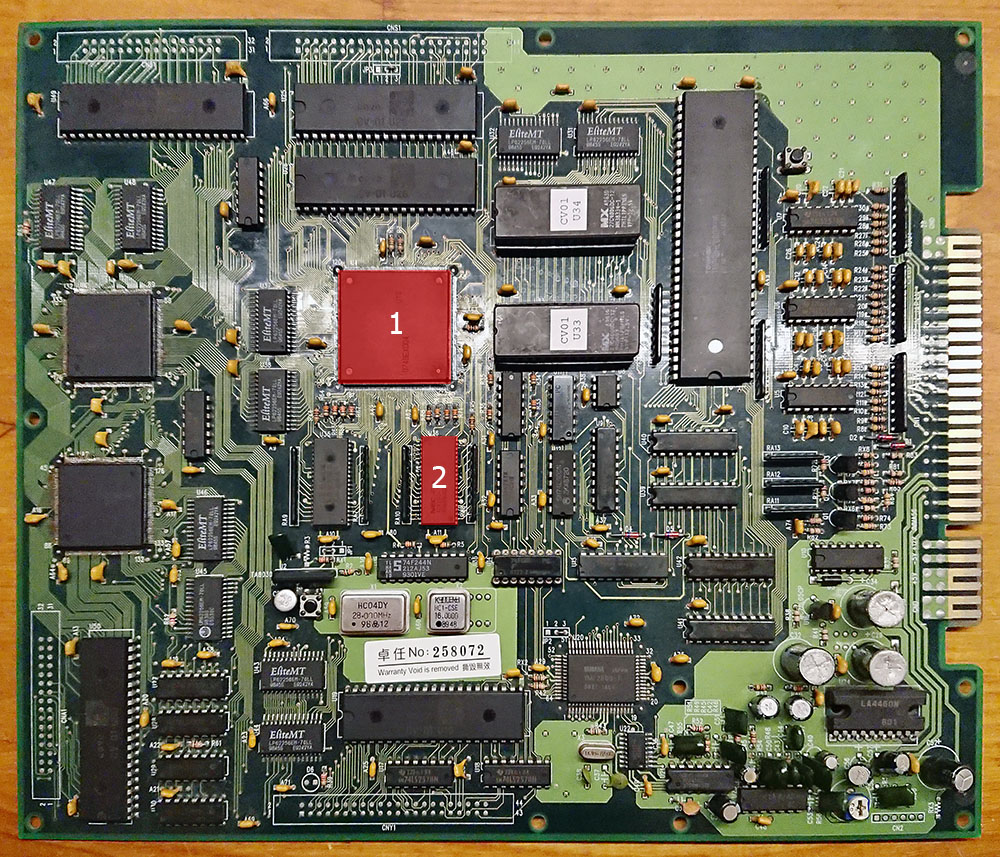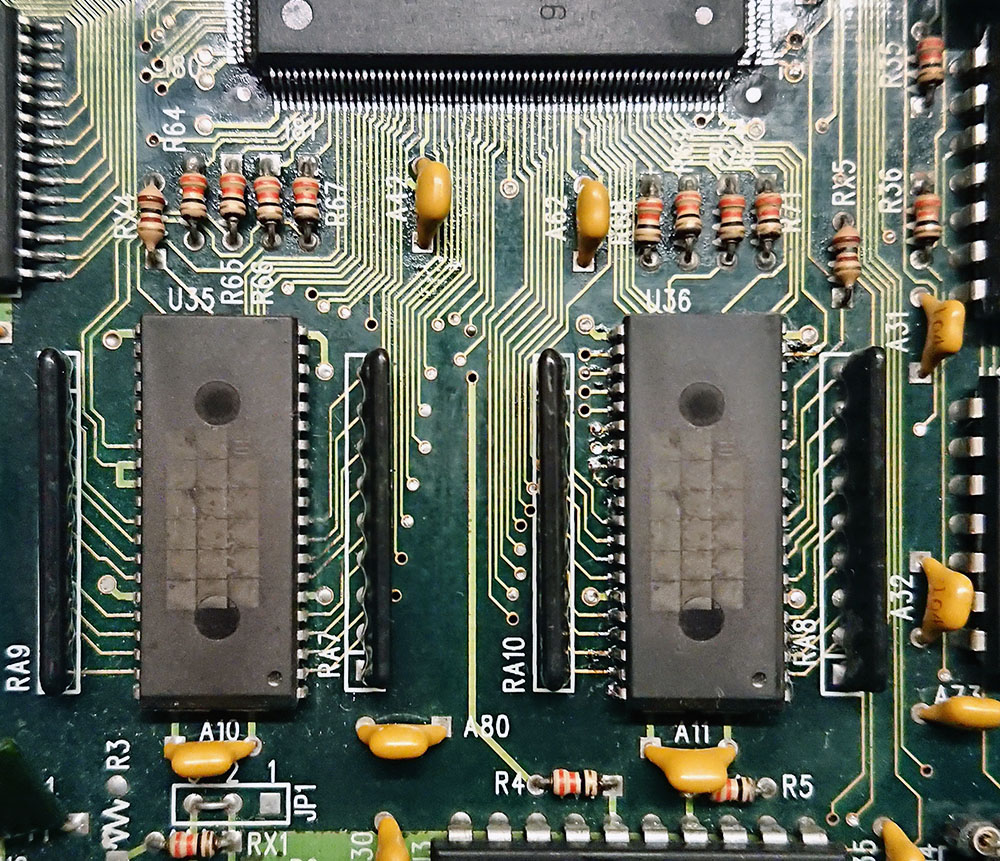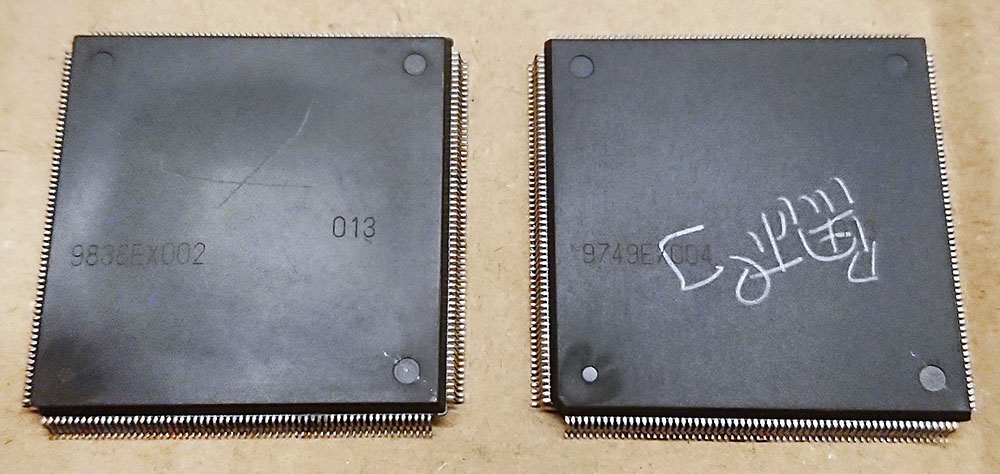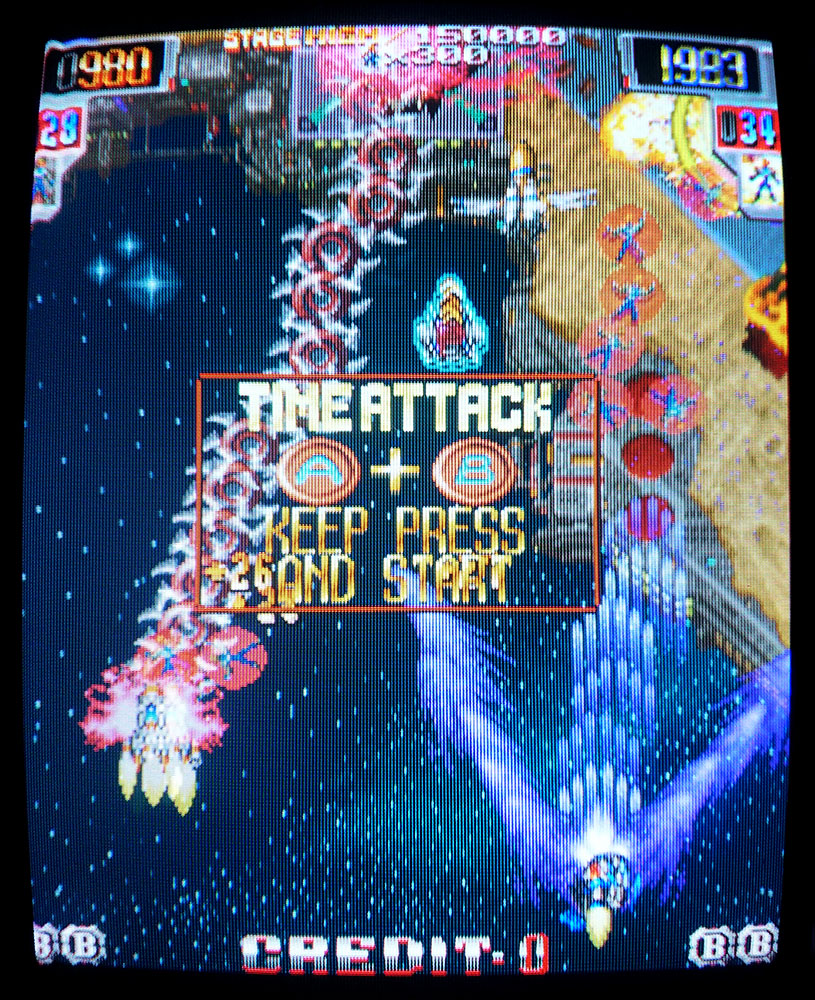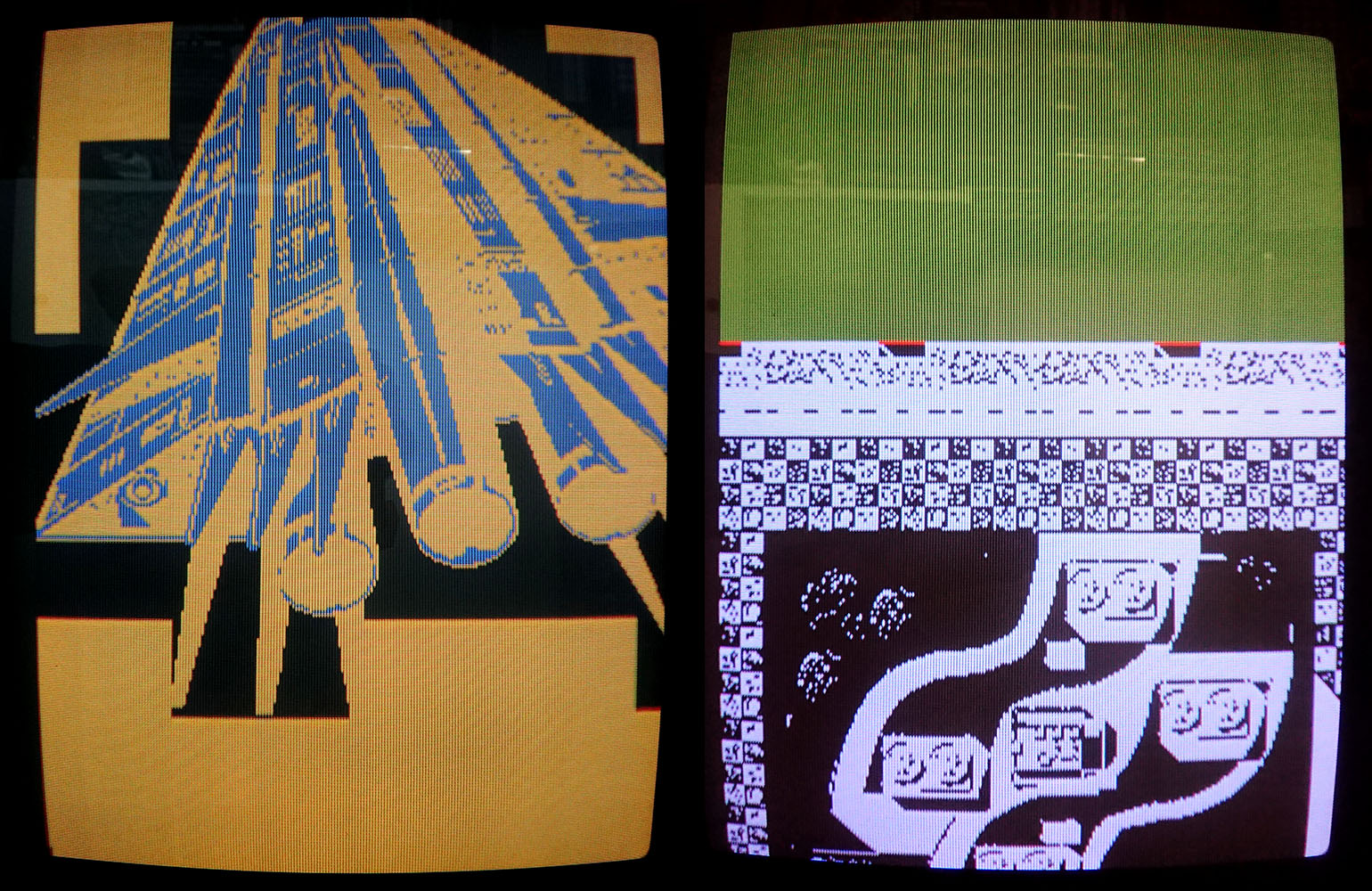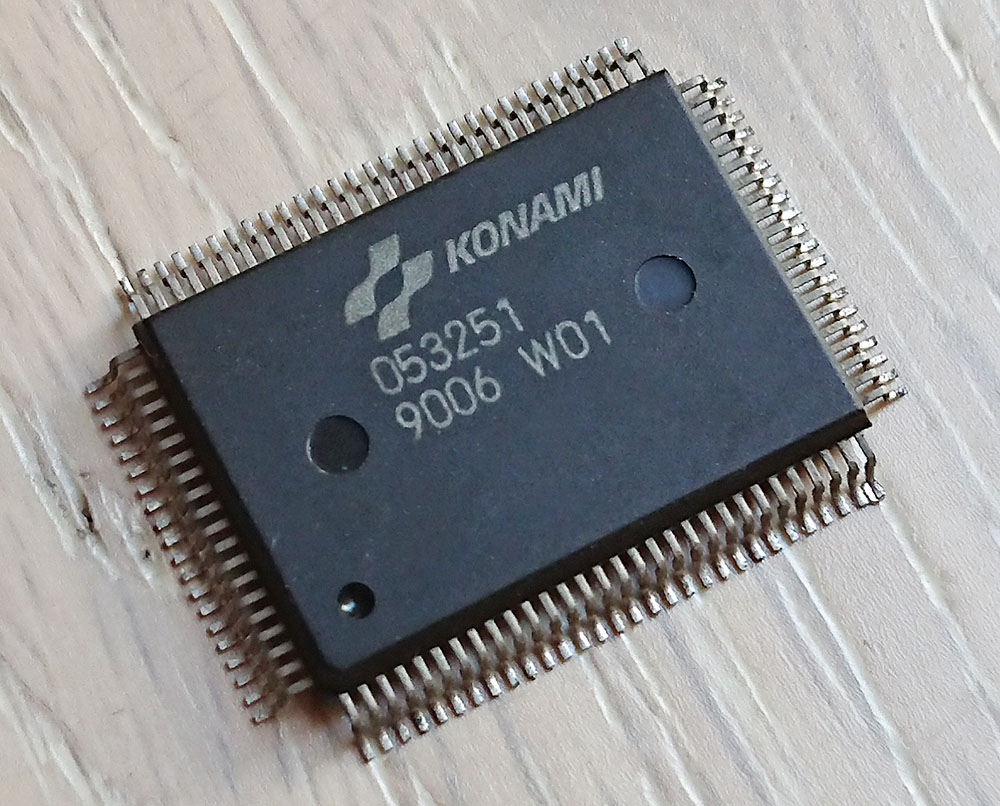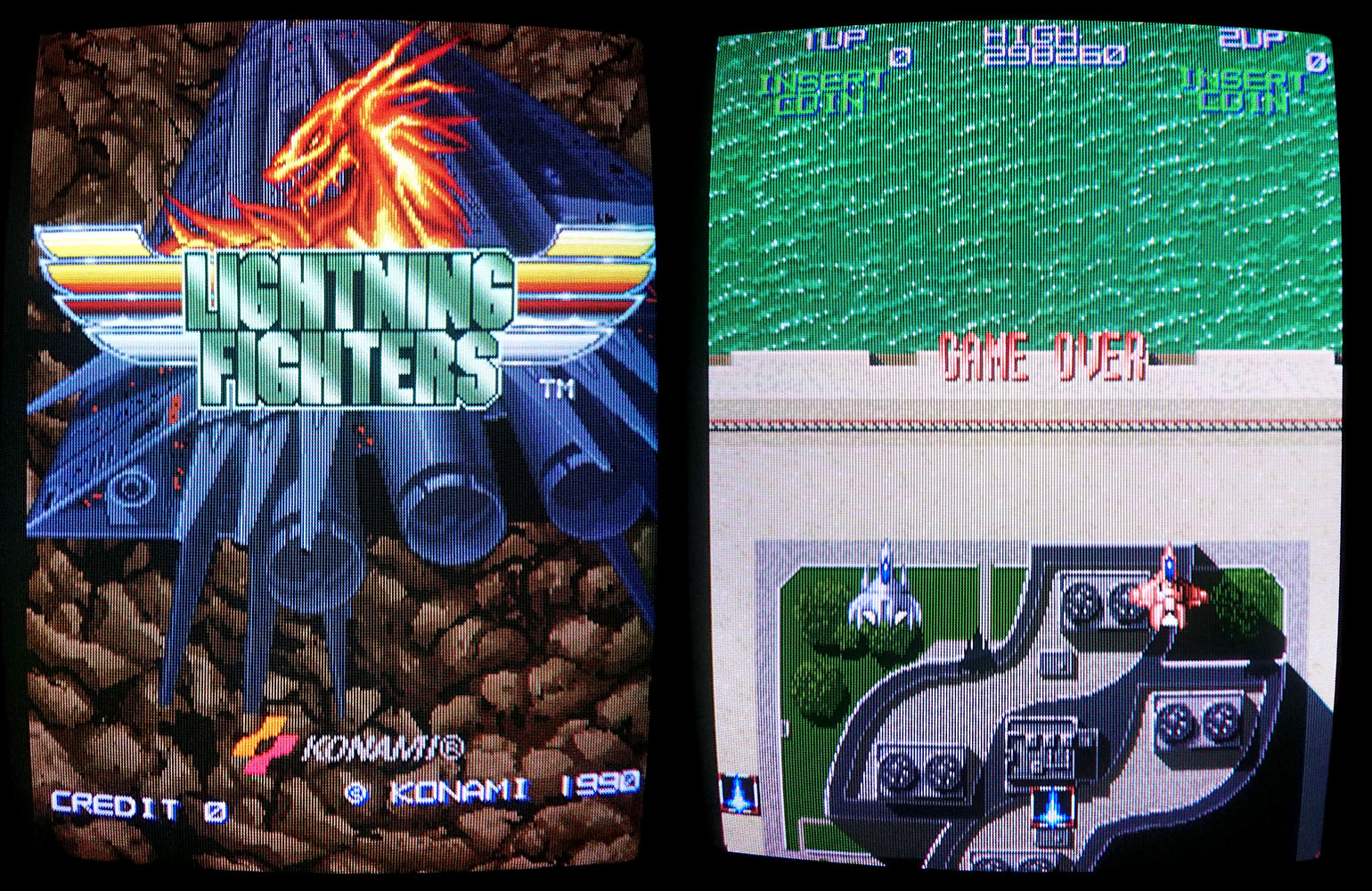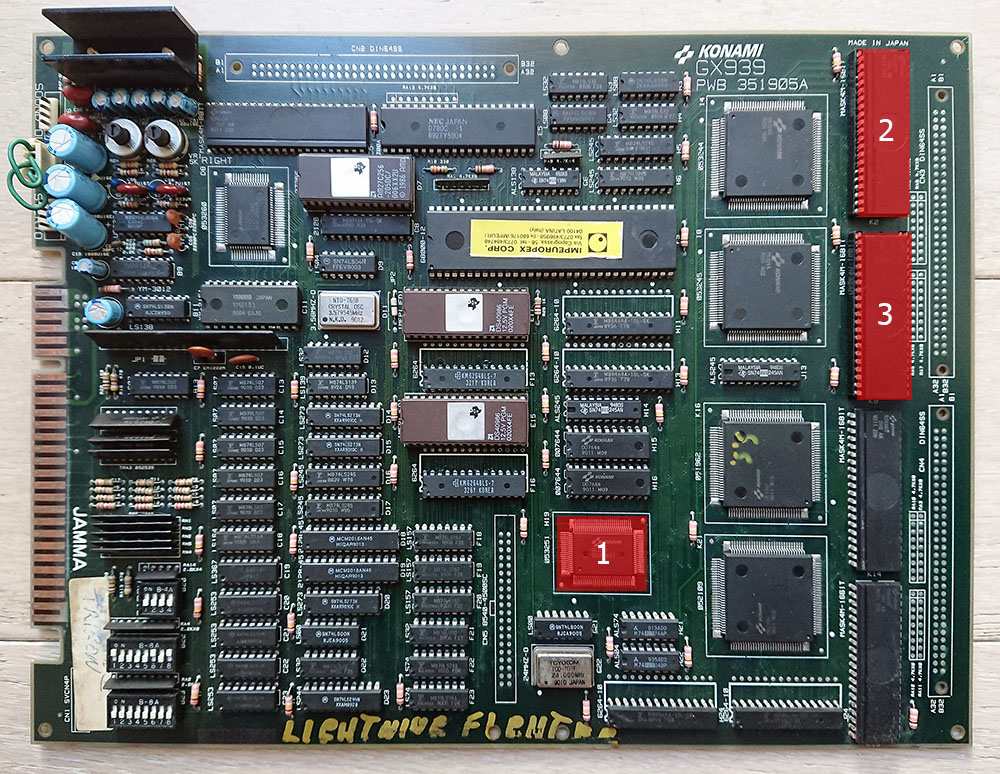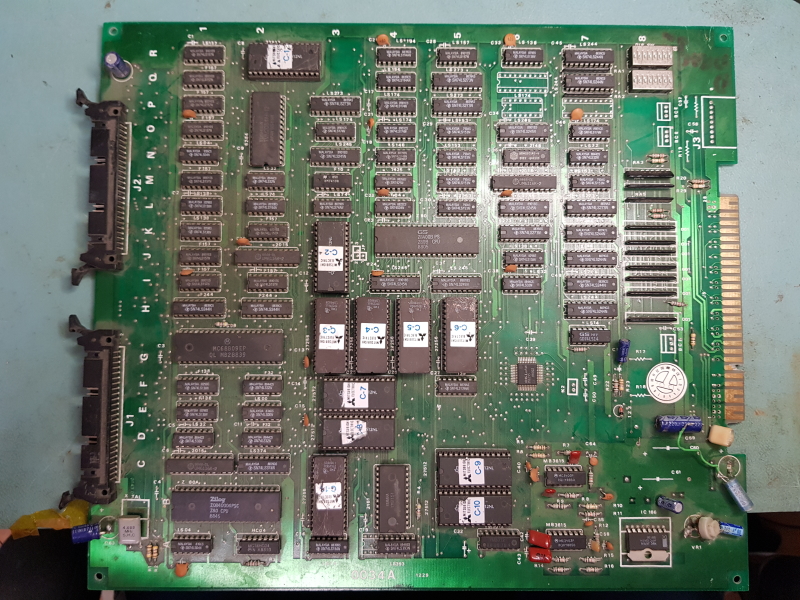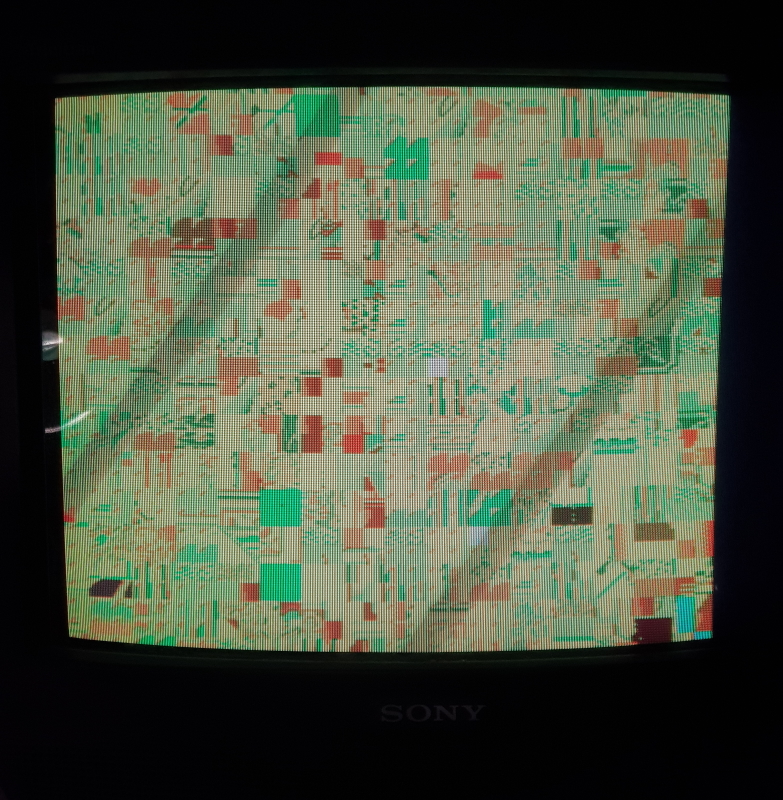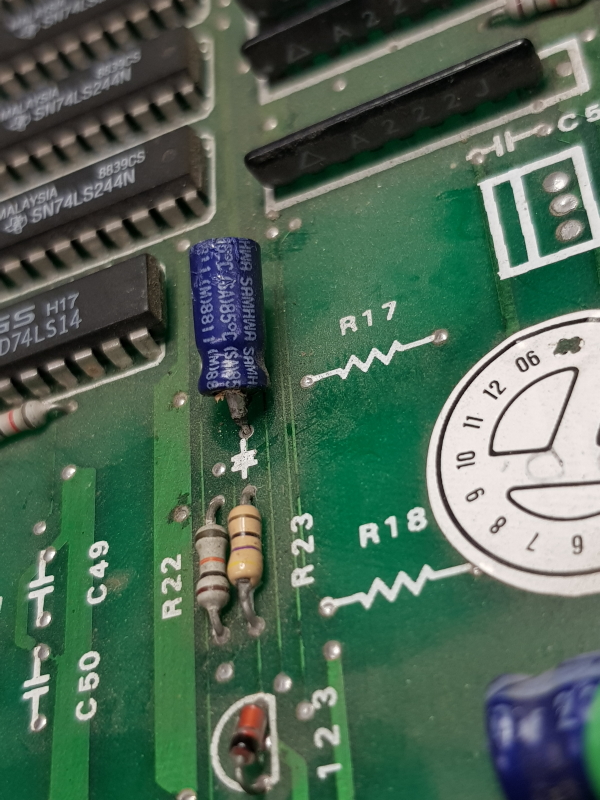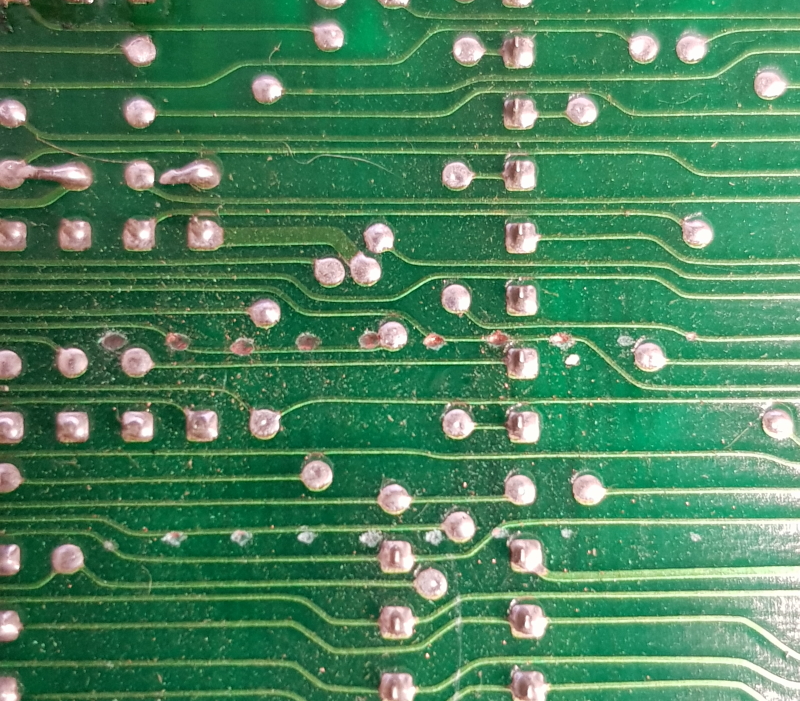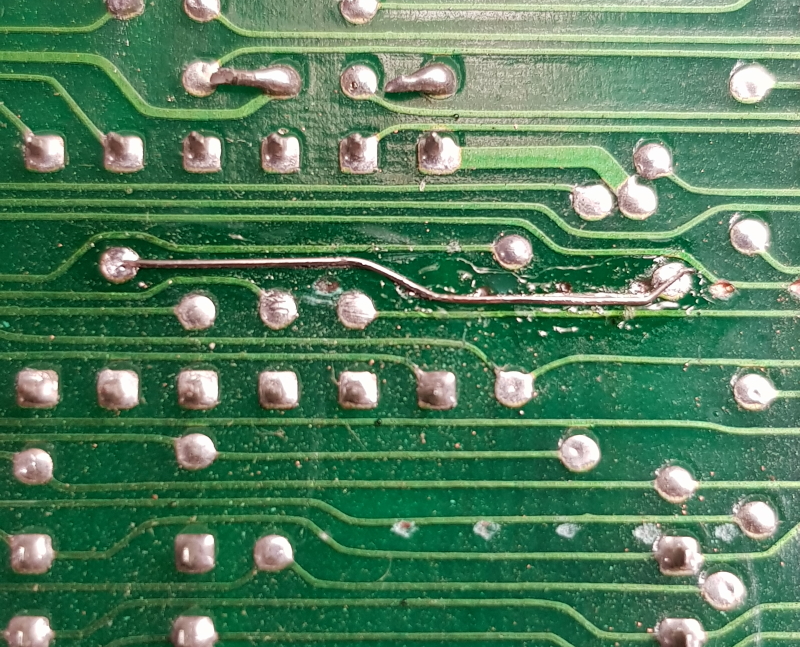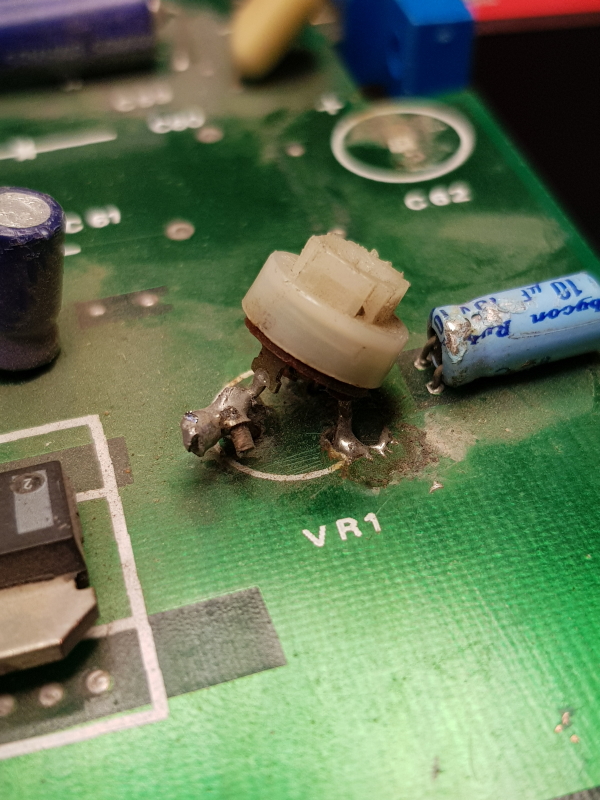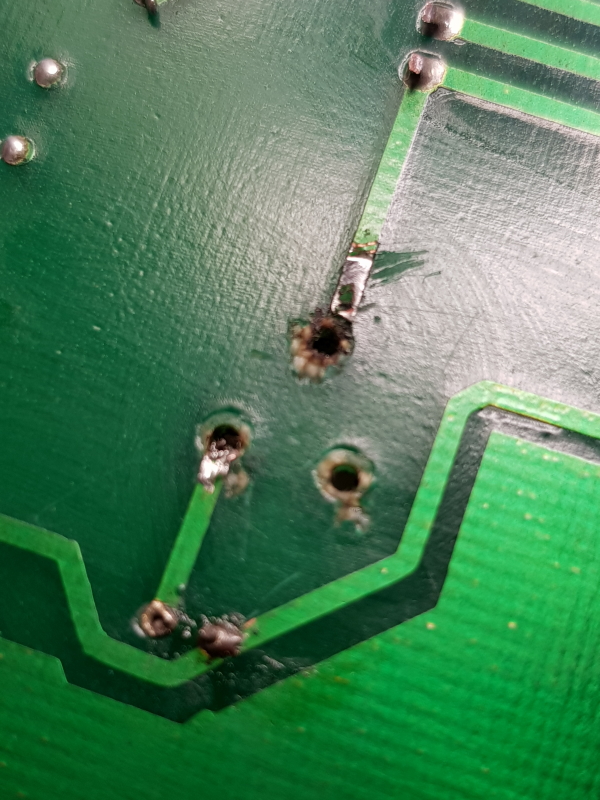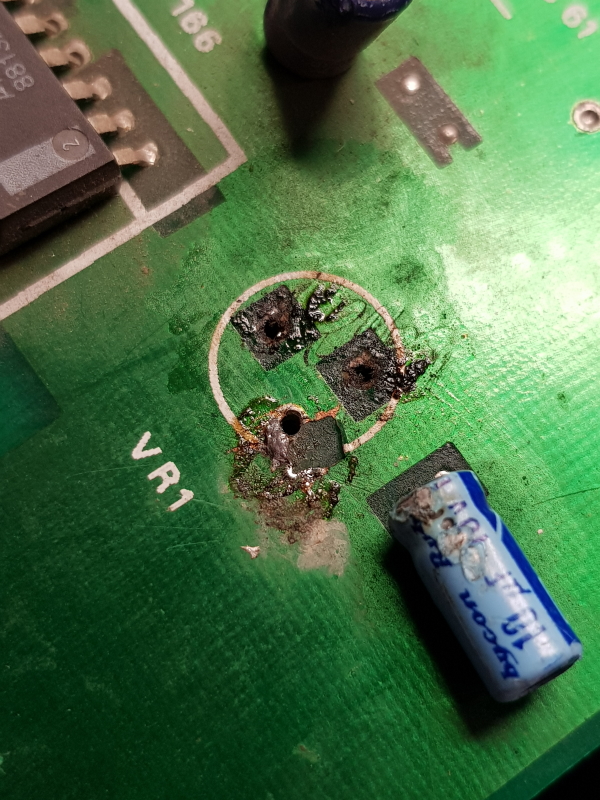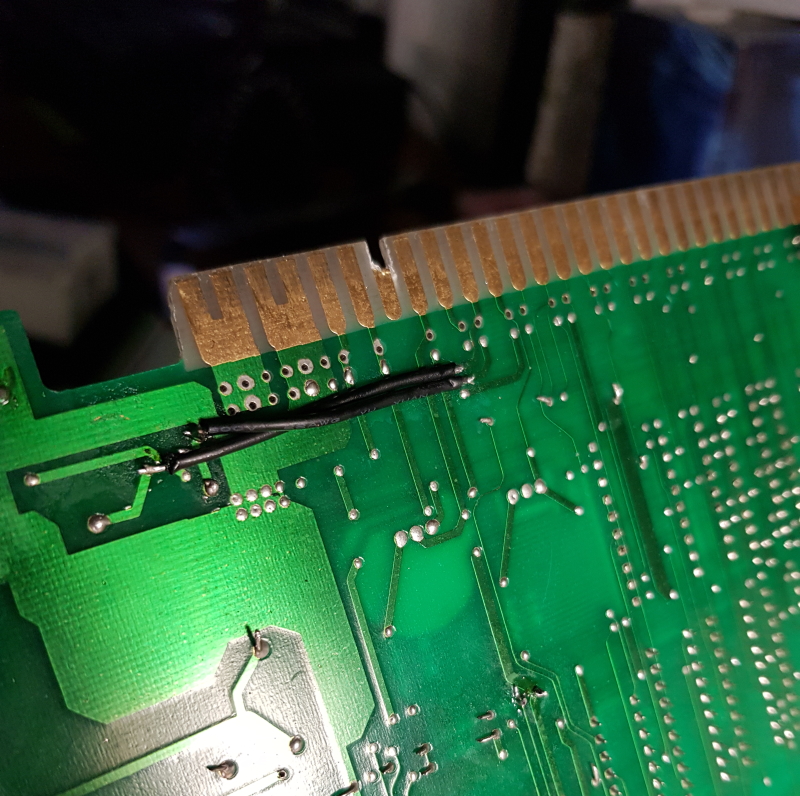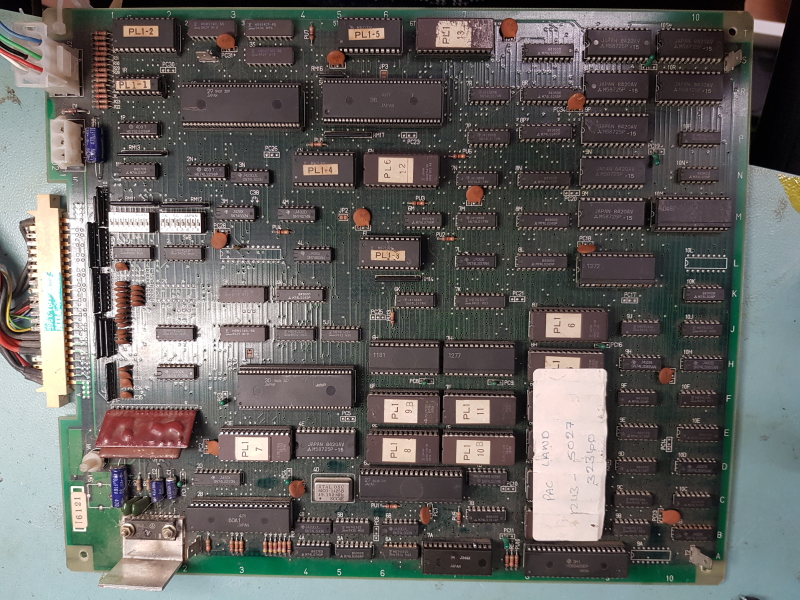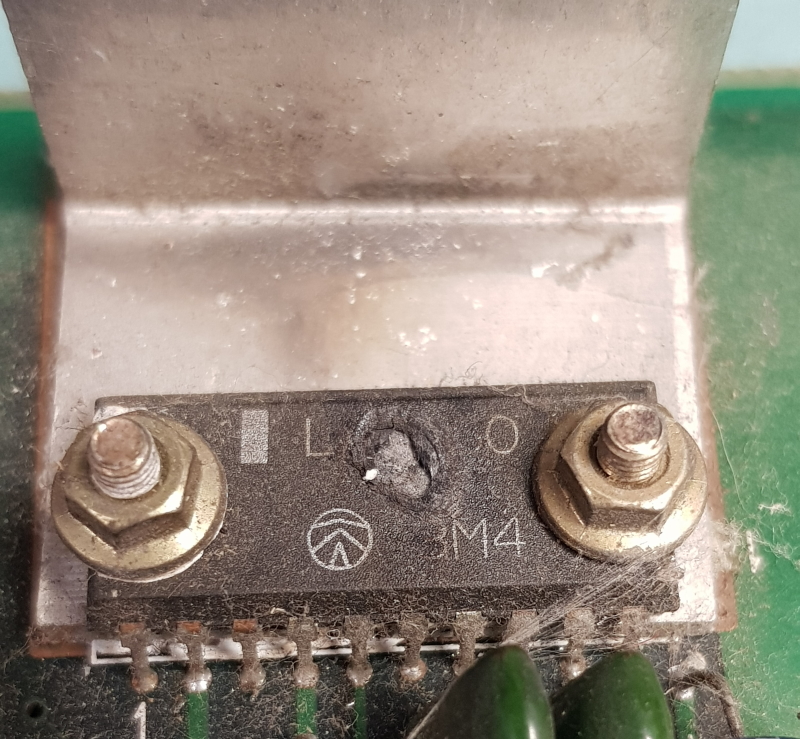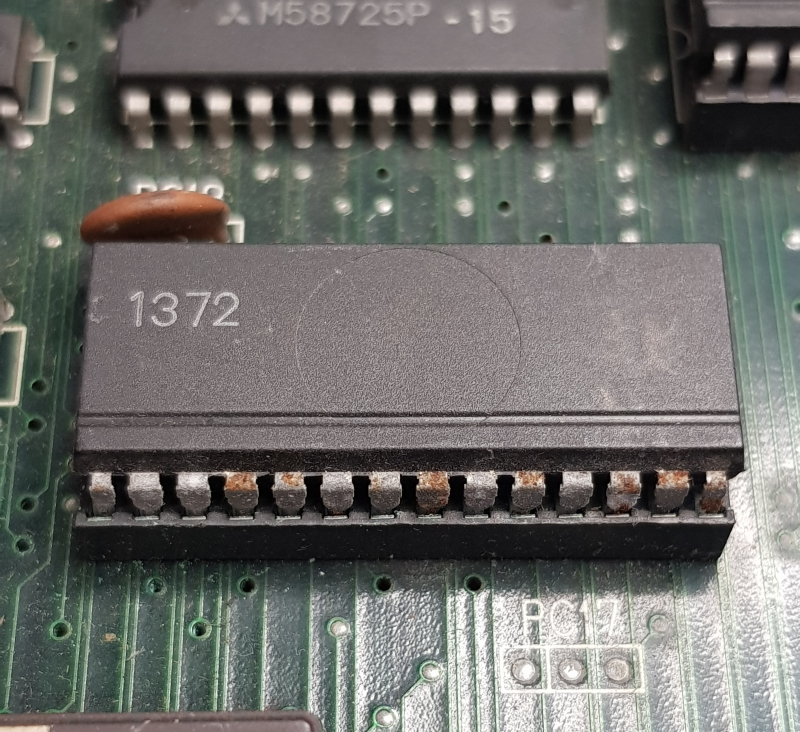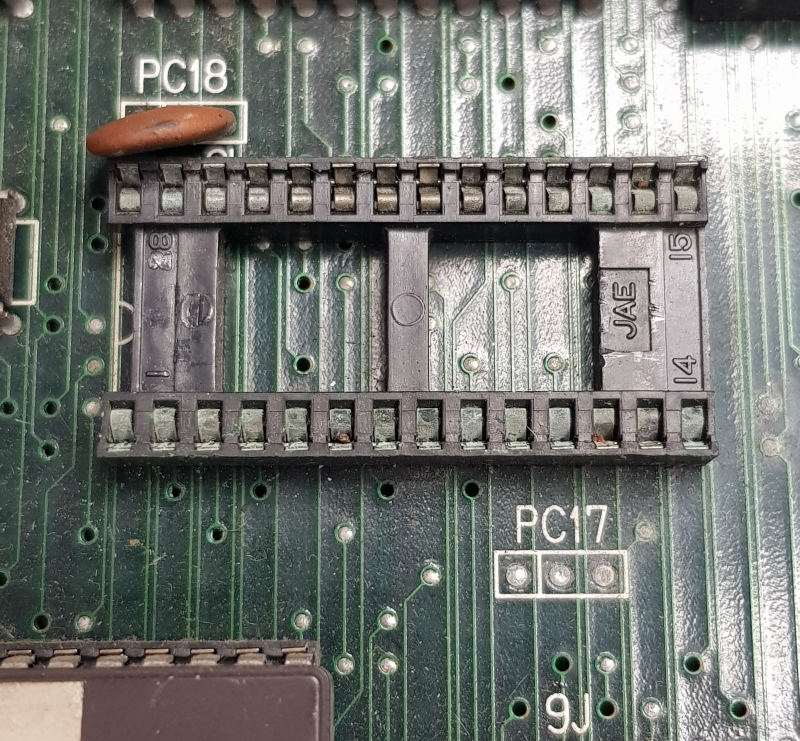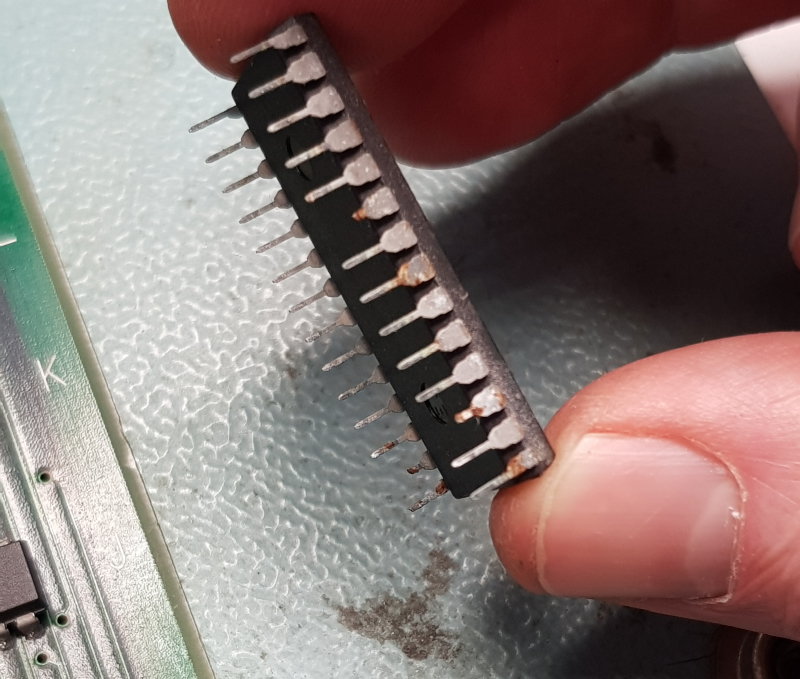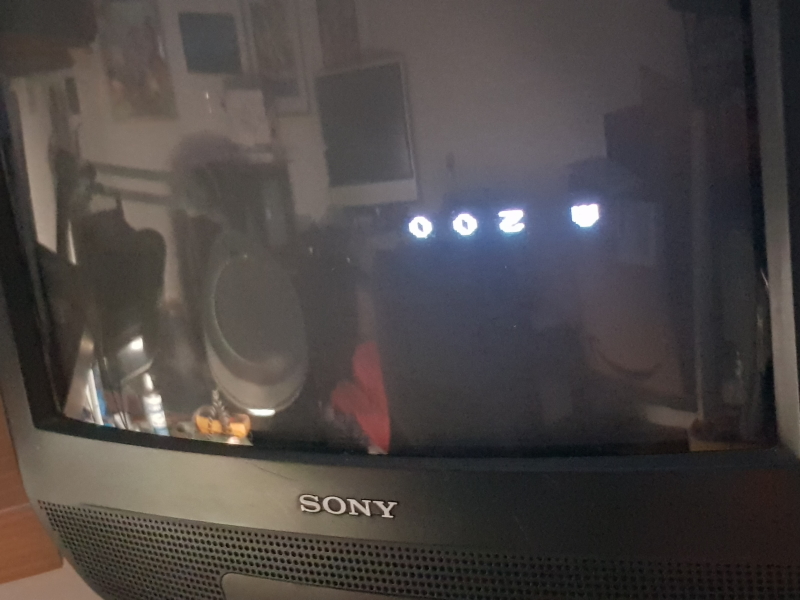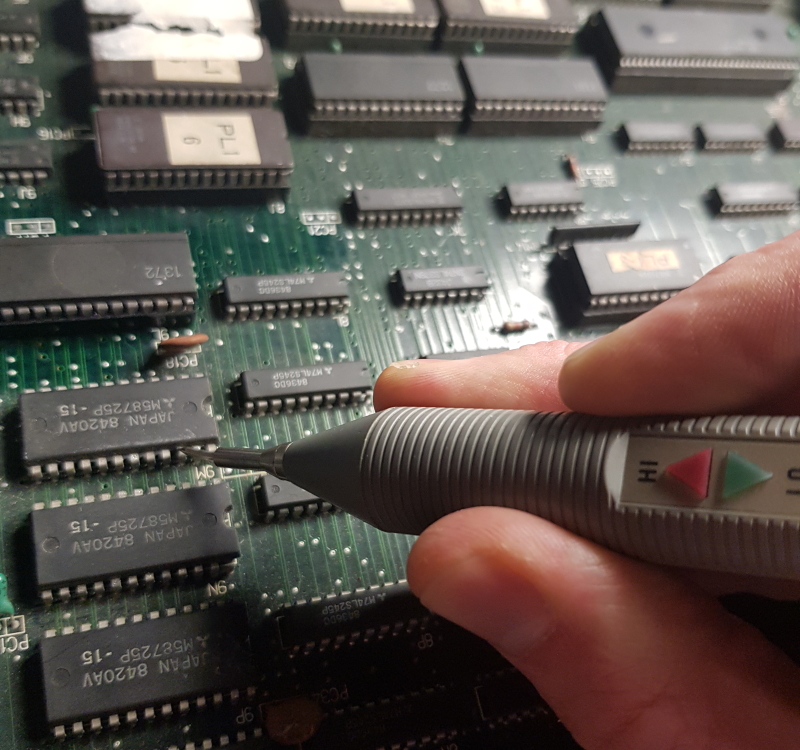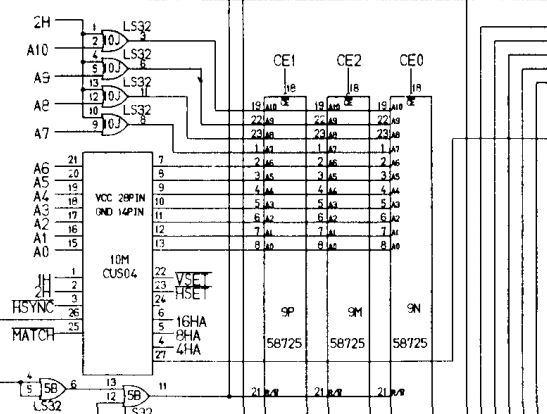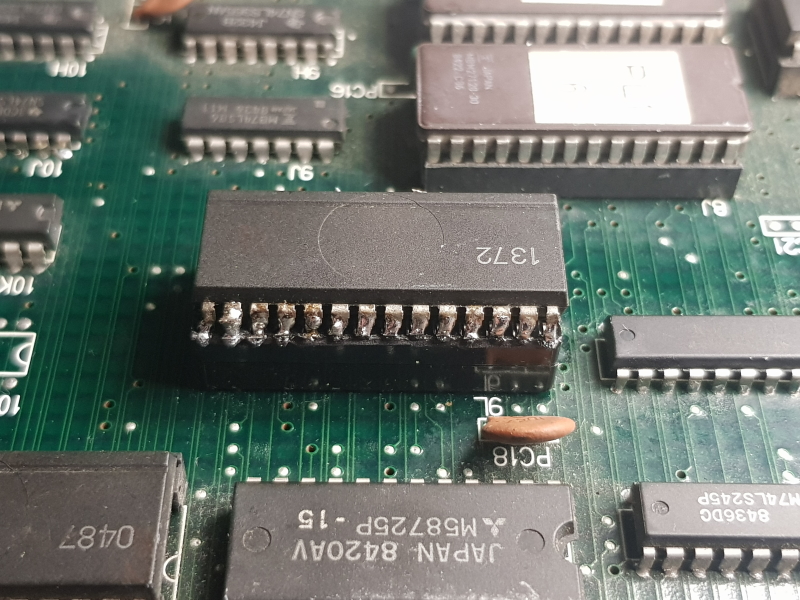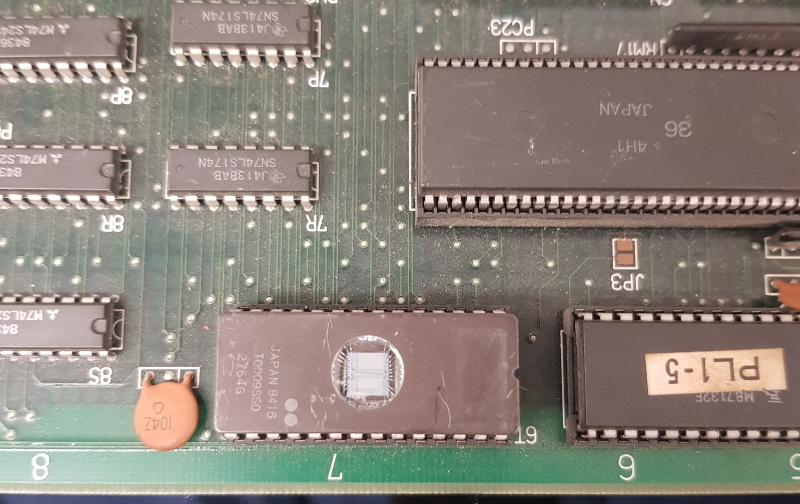I recently got two Operation Wolf boards from Muddymusic to fix.
This board was not booting at all and I got a screen full of flickering garbage
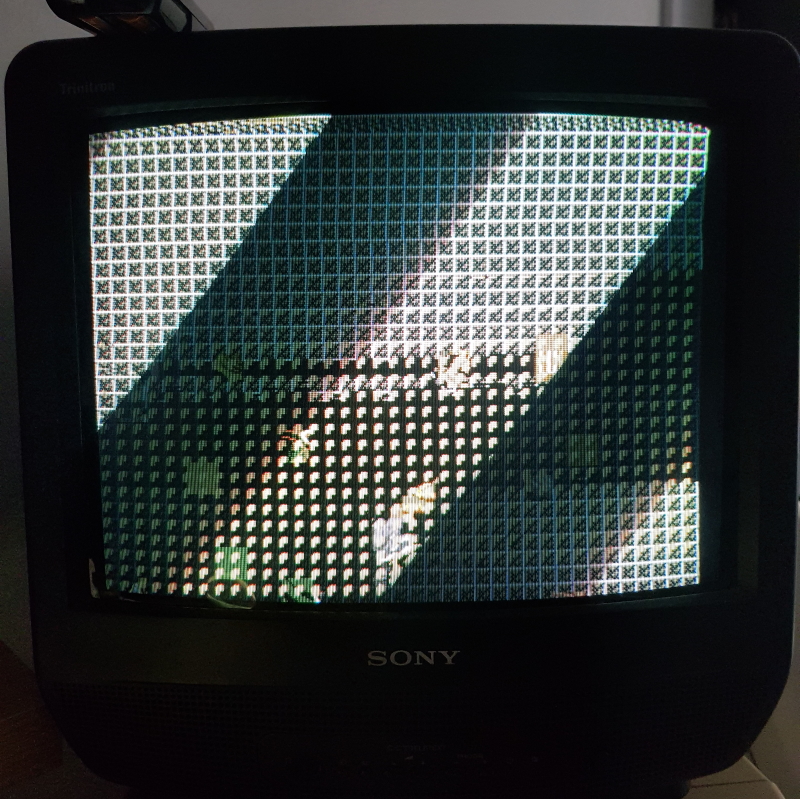
I removed all four of the 27C512 program EPROM’s and verified they were good. All of them matched the “World, Set 1” version in MAME.
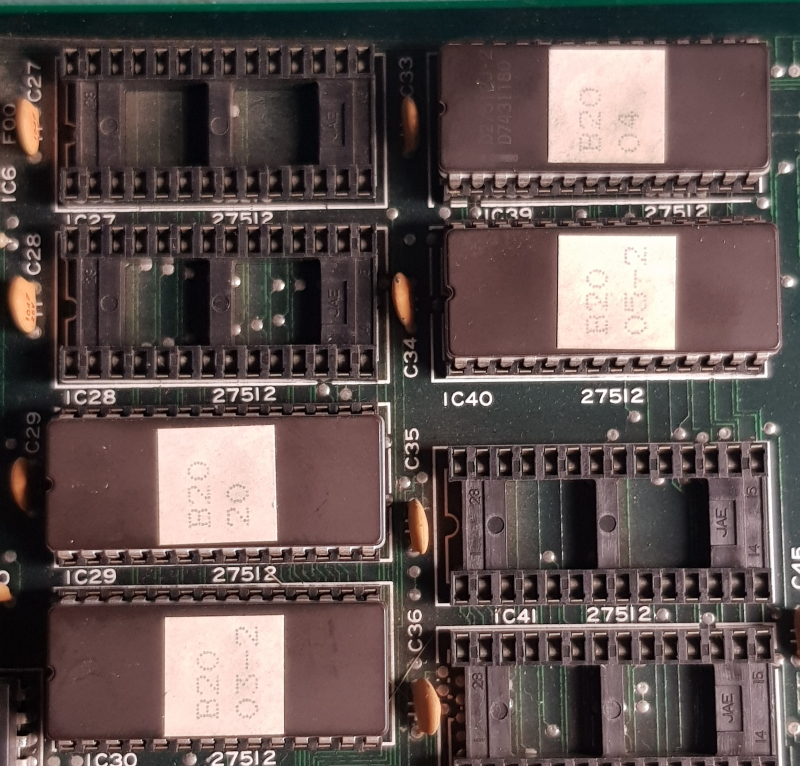
I confirmed continuity between all the address, data and control pins of both EPROM’s and RAM was present and correct and it was so I opted to remove the two TMM2063 work RAM chips and test those
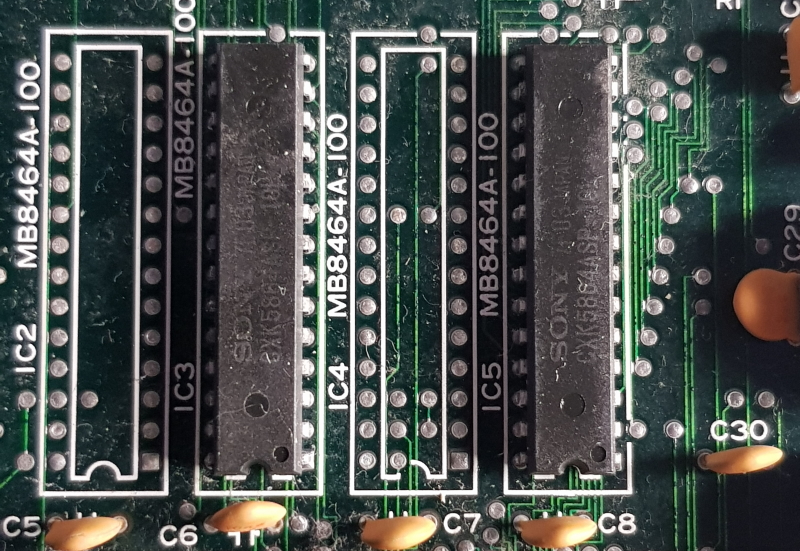
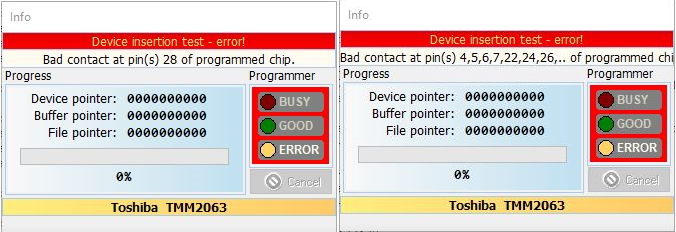
As you can see both failed. I replaced them and tested but there was no change.
Next I started looking at the reset circuit.
Here is the main reset circuit taken from the schematics
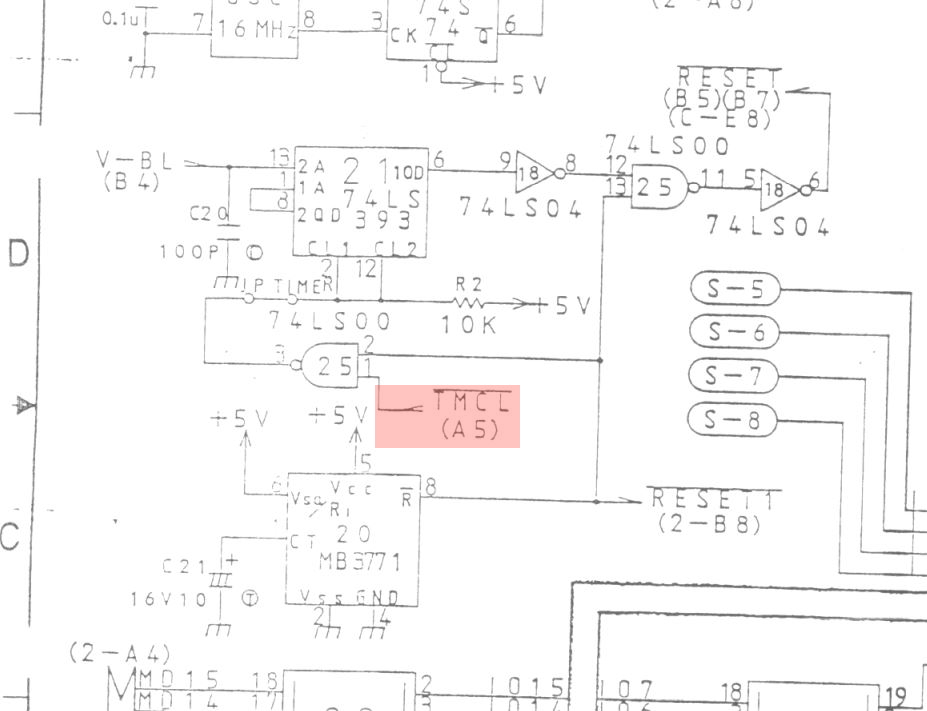
Using the logic probe I found that signal “/TMCL” (timer clear) was floating. Shifting focus to grid A5 on the schematics we see that this signal comes from pin 13 on the 74LS138 at location IC60.
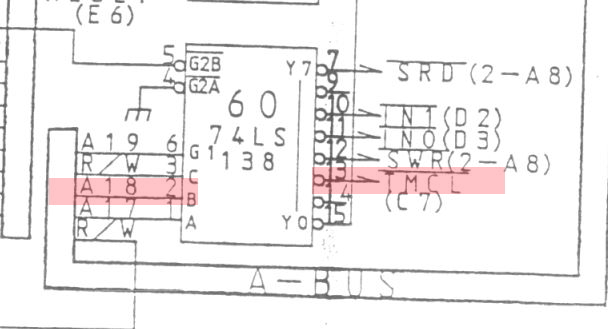
Further probing found that the A18 signal on pin 2 was also dead. This signal is the buffered MA18 (address bus pin 18) and comes from the 74LS244 at location 65. Checking the signal on the LS244 revealed that it was present so there was a break in the trace some where.
I couldn’t see anything obvious so I patched it with some Kynar wire
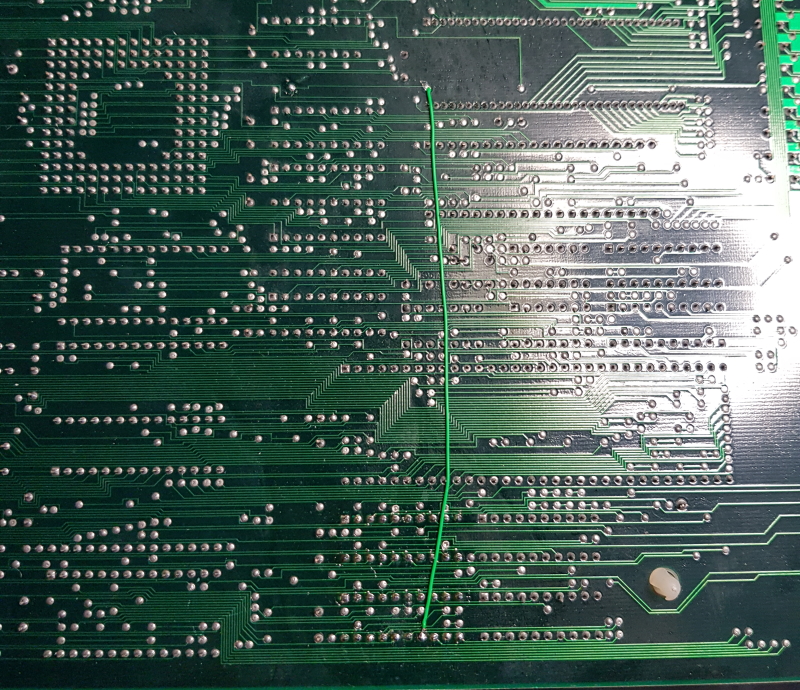
No on boot up I get no more resetting buyt the screen is full of garbage still
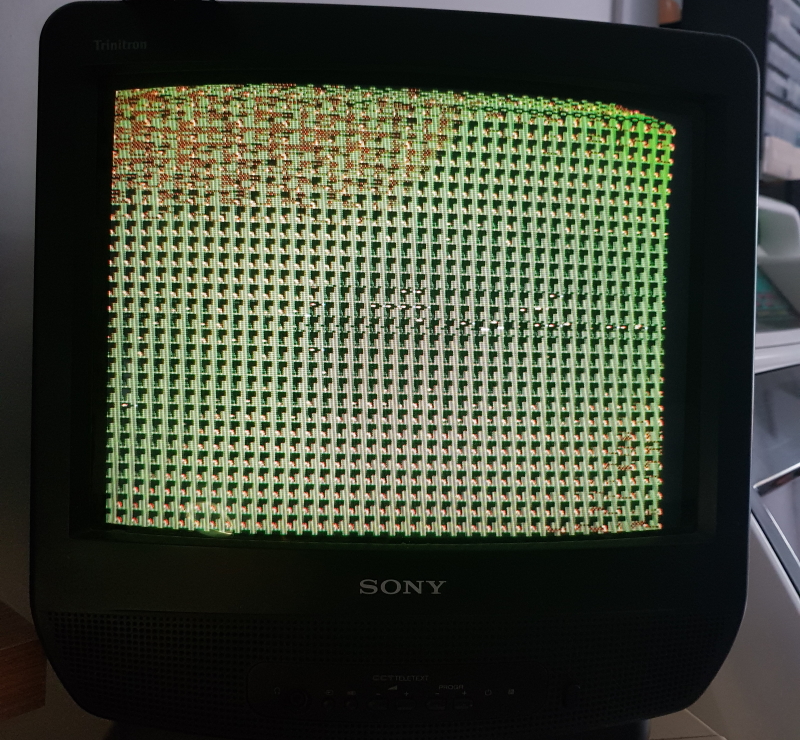
Next I started looking at the custom PC080 tilemap generators, more specifically the RAM connected to it
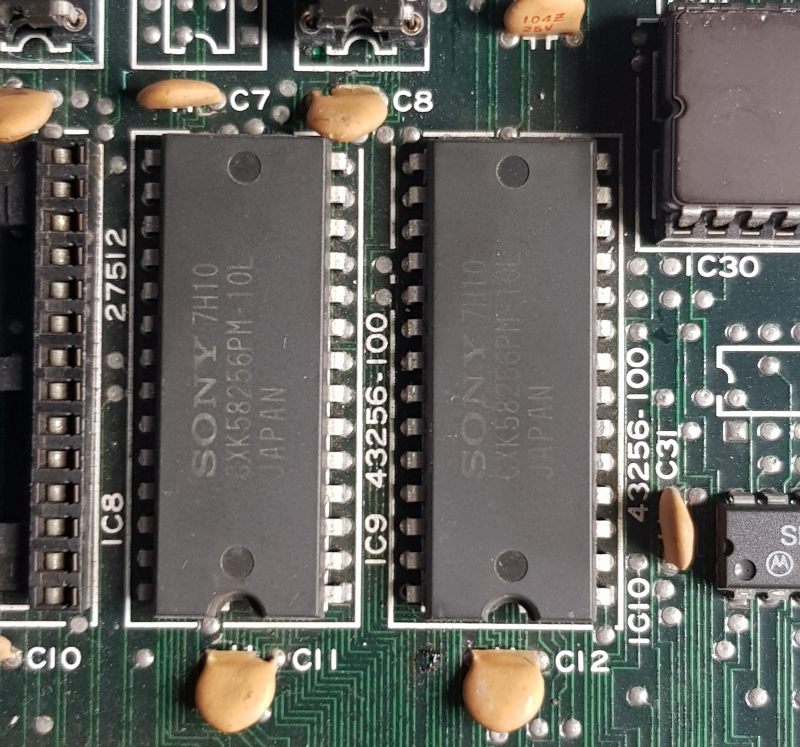
Checking both of these with the probe showed me there was no activity on most of these pins and some others were stuck high
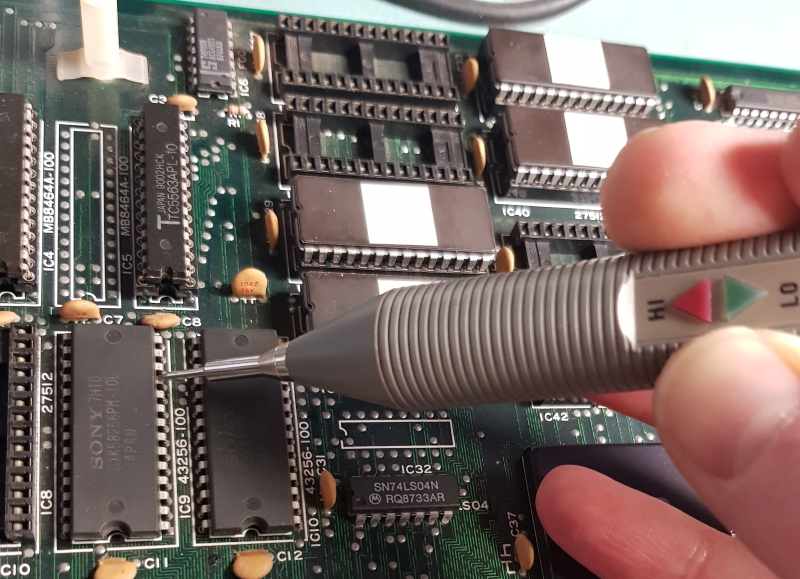
I removed both of them and checked them, obviously both failed
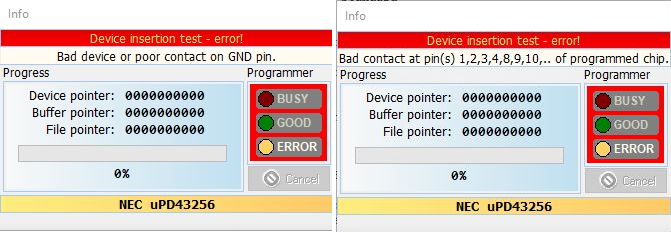
Replacing both of these now gives me something to see.
In test mode I get this
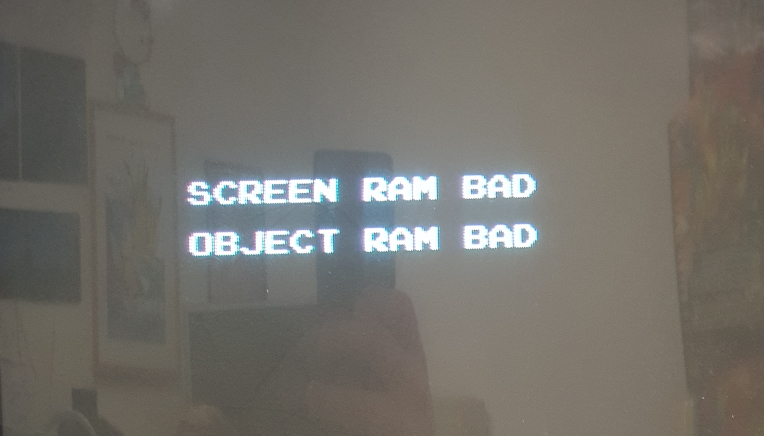
I looked into this fault for a good hour or so before I decided the RAM I fitted was too slow. Swapping for a faster RAM type fixed both of these issues.
Now the board would successfully pass the self test in the test mode I could see that I had an issue with colours.
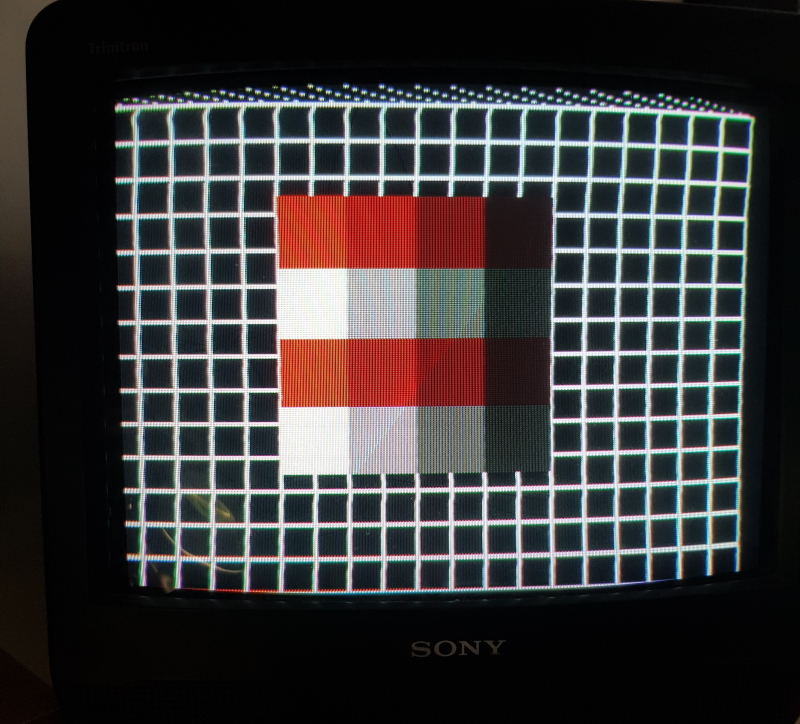
I started off probing the colour RAM at locations IC64 & IC65 and quickly found bit 4 of the address pins stuck low
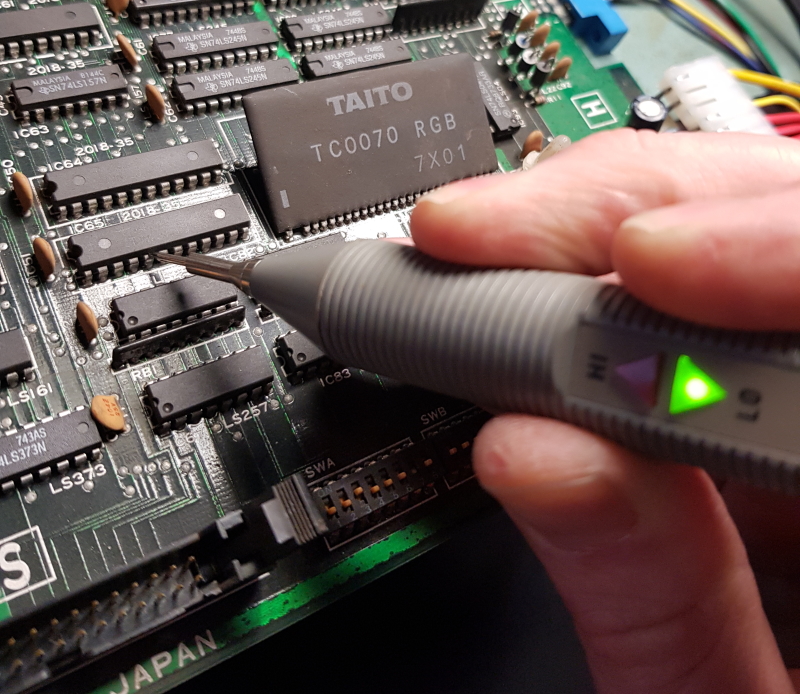
Using the schematics I could easily trace this back to a 74LS157 at IC52
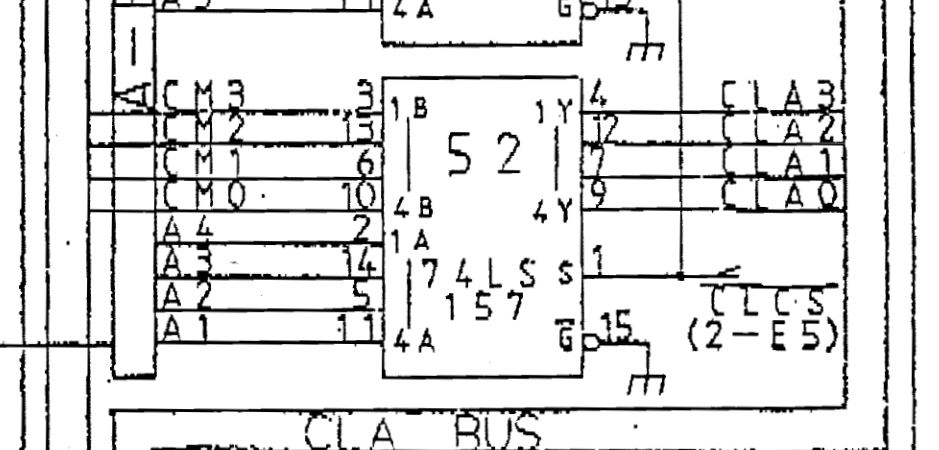
Replacing this gave me my colours back
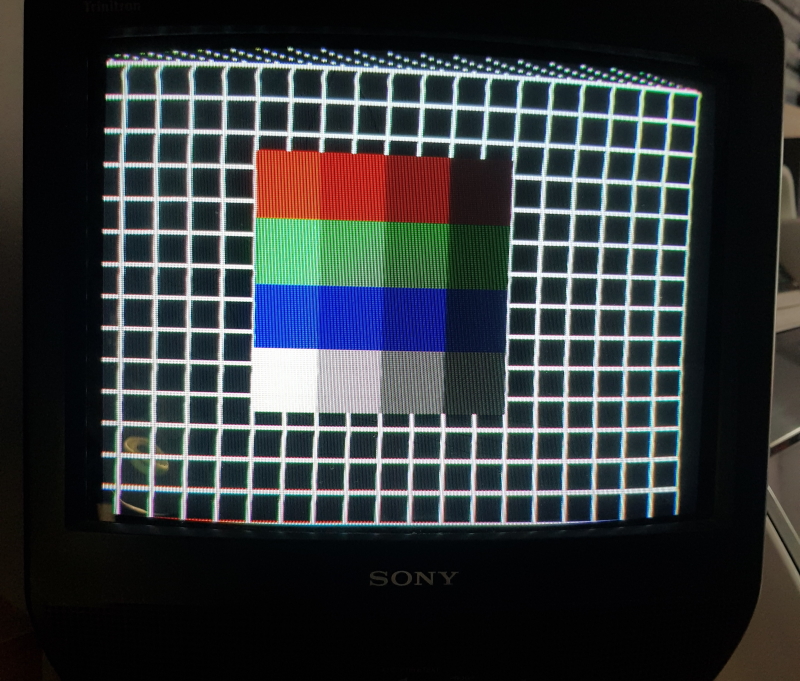
Now onto the sound board.
The good news is all the music was present and correct. The bad new was all the voice samples were not.
Again, using the schematics I see that ultimately the addressing for the Maskrom at IC21 gets set by a bunch of 4-bit counters at IC27-IC30.
Probing these I found that the UP counter wasn’t pulsing at all
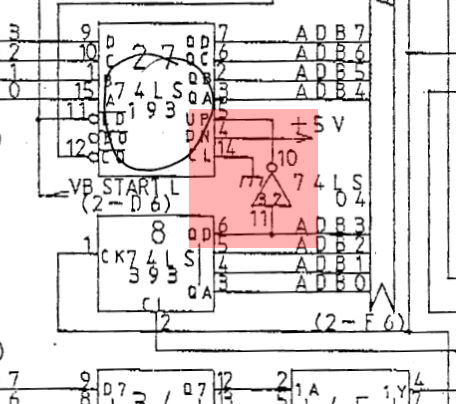
Checking the 74LS04 at IC32 revealed this inverter was bad so I replaced it and sound was restored but the sounds just carried on playing one after the other (never got a video of this).
The Z80 sets the start and stop data by writing values to address $C002 & $C003 respectively which gets latched by a couple of 74ALS574’s and fed into the B side of a 74LS688 comparator
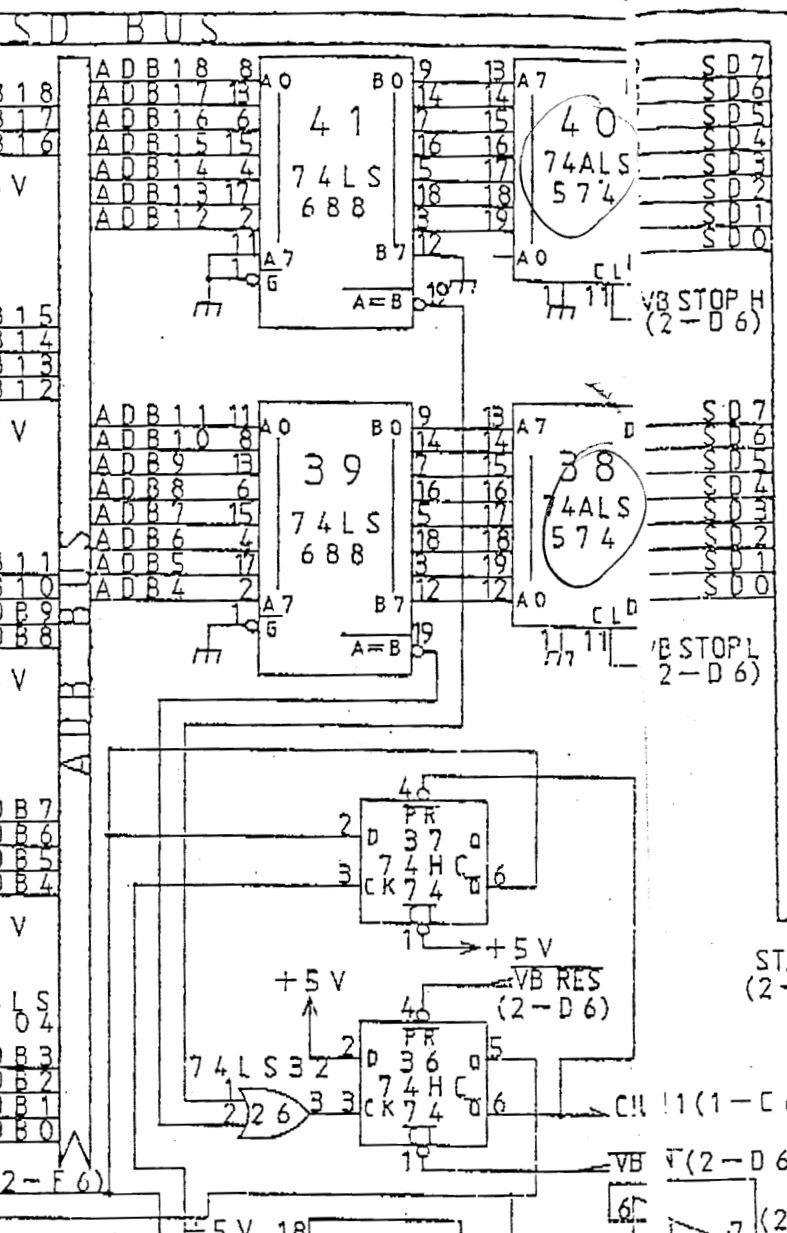
Using the MAME debugger I could see that the data being written to the 74LS574’s was correct but probing the /A=B output pin 19 of the comparators showed that these were either never matching or they weren’t working.
I couldnt find issues up stream of these so I desoldered them and replaced them with pulls from another board as I don’t have any spares.
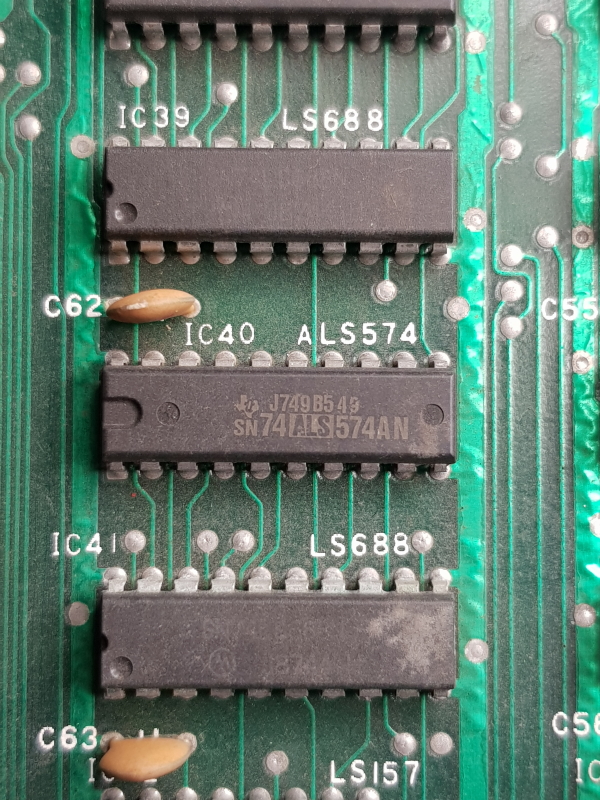
I now have working sounds and fully working board set ready to return.

